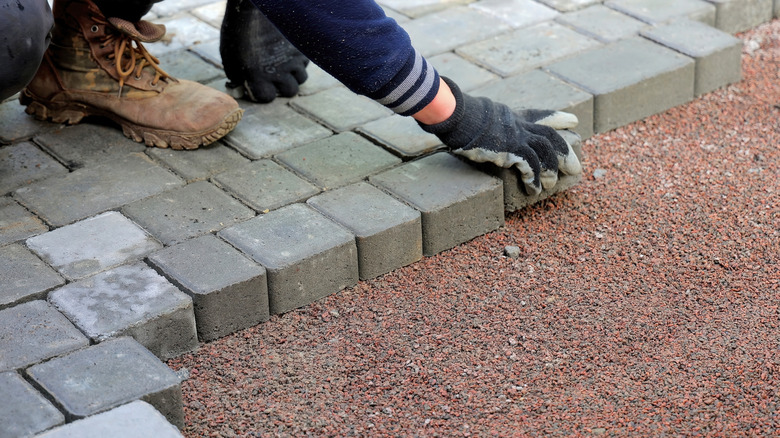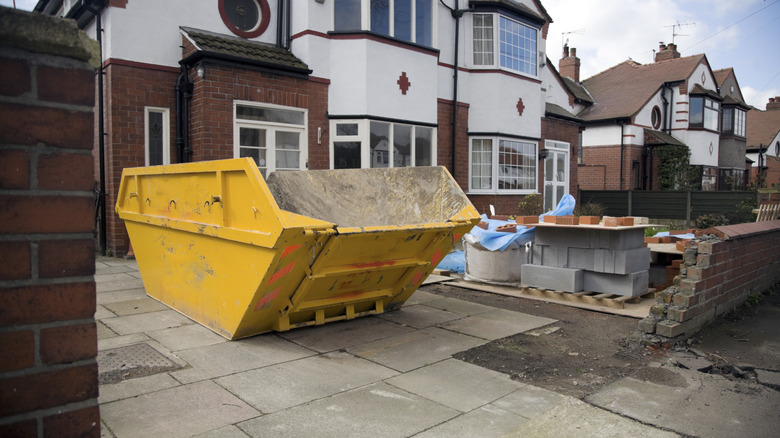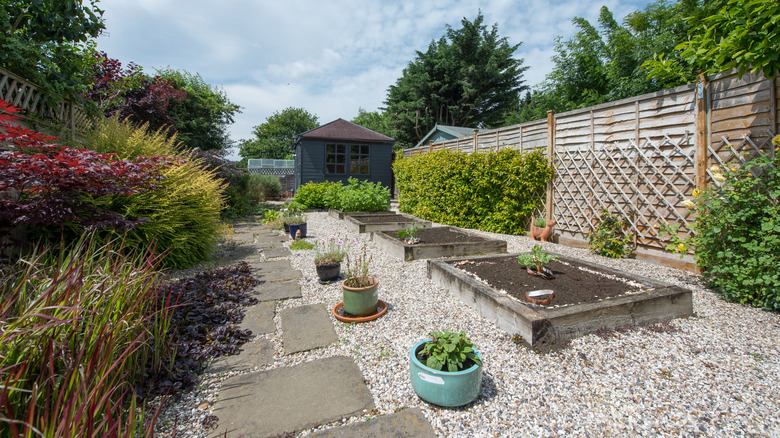How To Get Rid Of Extra Rocks And Gravel
Whether you're clearing out an old gravel garden in your backyard or have leftover rocks from a recent landscaping project, you may be looking for ways to get rid of the aggregate. Disposing of extra rocks keeps your yard tidy and prevents the excess material from killing grass if you keep it piled in your yard. You have several options for removing the rock that you no longer want, including throwing it away, selling or donating it, and finding a way to reuse it around your property.
Each option comes with pros and cons that help you decide. For example, hauling rocks to the landfill is an option in some areas, but you'll need a truck to haul the material, and you'll likely have to pay a disposal fee. Renting a truck to haul away the rocks comes with extra expenses, too.
Consider how much rock you have to get rid of and what resources you have available for hauling the material. This can help you decide if you want an at-home option that doesn't involve transporting the rocks somewhere else. The condition of the rocks also affects what you can do with them. Low-quality aggregate probably won't sell well, so tossing it is a quick solution. On the other hand, new rock that's left over from a project may be easier to sell.
Sell or donate the rocks
If the rocks and gravel are still in good condition, give them new life and reduce waste by selling or donating them. This option works well if you overbuy for your landscaping project and want to recoup some of your costs from the leftovers. Online platforms, such as Facebook marketplace or local groups on social media, help you reach more people by advertising the rocks you want to sell. Homeowners often use those platforms to find affordable renovation materials. Describing the landscaping materials accurately, including the rock type and how much you have available, and attaching photos, should help you connect with interested buyers.
Alternatively, check with local organizations to see if they have a use for the gravel. Look for companies that use different types of rock in landscaping, such as local community groups that perform beautification projects or make home repairs for low-income residents. Some Habitat for Humanity ReStores accept clean landscaping rocks, but check with your local store, as the guidelines vary by location. Other nonprofit organizations may use the donated rocks to improve their property, so it doesn't hurt to ask around.
You'll have options to deliver yourself or have the other party pick up the rocks. Many charities have pick-up services for donations, so you don't have to do the hauling yourself. Either way, you'll need to put the rocks in containers and make sure they're clean. If you sell the rocks, specify in the ad whether you'll deliver the landscaping materials. Another option is to place the rocks in your driveway with a "free" sign nearby.
Throw away your excess rocks
When you're clearing out rocks or gravel from your garden or landscaped area, throwing away the material is a quick solution. You don't have to look around for a buyer or arrange for a pickup from a nonprofit. However, you don't want to throw the rocks in your regular trash can. Regulations vary based on where you live, but landscaping debris like rocks and gravel often isn't allowed with your regular household trash.
Instead, you can haul the excess material to the landfill yourself for disposal. Check with the landfill first to make sure they accept landscaping debris and determine how much it will cost you. Your local waste management facilities may offer recycling programs for rocks and similar debris. If you don't want to haul the material on your own, renting a dumpster that's delivered to your home is an option. You typically need a 4- or 6-yard dumpster for this purpose, but the rental company can help you determine the correct volume based on your project. Keep in mind there may be weight limits on the dumpster, which you could exceed when getting rid of large amounts of rock. Junk removal companies sometimes remove leftover hardscaping as well. You'll likely pay more to have someone take the rocks away for you, but it reduces your workload because the company does the heavy lifting and hauling.
Find a new use for gravel
Gravel and rocks offer benefits in many areas of your yard, so you could upcycle the leftover material in another space. One option is to use gravel to help your landscaping projects with drainage. Depending on the type of gravel you have, it might work as a well-draining and attractive surface material for driveways, patios, and walkways. If you already have hardscaped areas, use the extra rocks to refresh those spaces. You can also use old rocks as a base material for patios and driveways.
Using gravel in a planting bed is an option, but this use has some drawbacks you must consider. Rocks tend to absorb heat from the sun then radiate it, and the higher temperatures could damage the plants. While it's effective at draining water away from your home, that drainage could leave your plants begging for more water. Gravel also affects soil health, particularly if you use carbonate rocks like limestone, which increase the soil's alkalinity. Plants that thrive in acidic conditions could suffer as a result.
If you're dealing with larger stones, use them as part of a rock garden to create visual interest with different sizes of rocks on display. Larger pieces also work well as a dry-stacked border for a planting bed. To create a border with smaller stones, dig a trench, add a level layer of sand as the base, and add your small rocks to create a transition area between a planted bed and the lawn.



